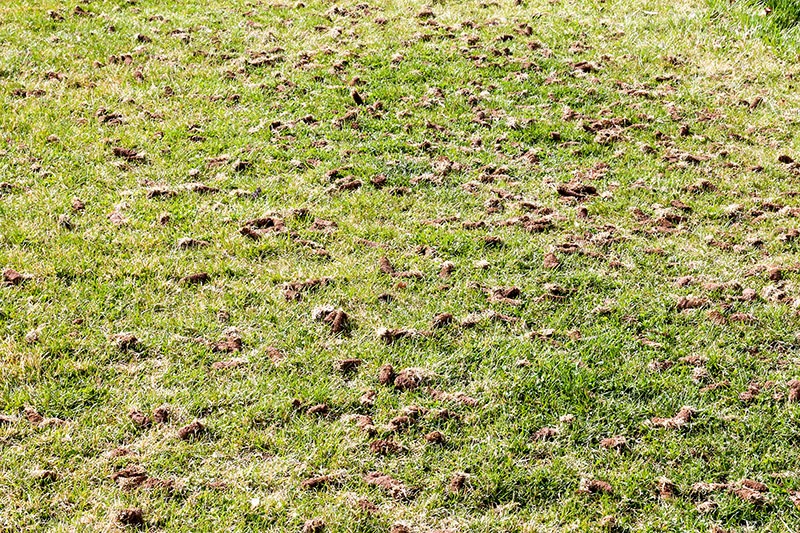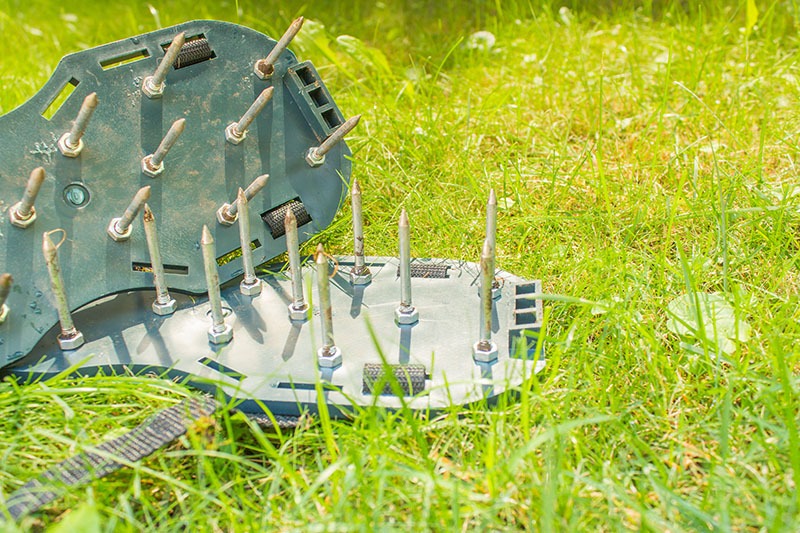
A manicured, velvety green lawn can enhance the beauty of any landscape. If you have such a well-tended green, you want to keep it healthy and lush all year round. Besides being the place where you can laze in your hammock, watching sparrows gather, squirrels dart across, and the seasonal frog hop, a lawn has many uses. Depending on its size and location, you can convert it into a mini-golf area, a grass wall, a basketball court, or your kids’ play area. A lawn would also be the ideal place for a barbecue. For a household with pets, it could be where they expend their energy as they get some exercise. That’s why aerating for a healthy lawn is so important.
Getting a lawn is easy; maintaining it, however, is a life-long commitment. Ensuring that it does not lose its luster requires regular maintenance with fertilization, water drainage, mowing, and aeration.
What Is Lawn Aeration?
Wondering what lawn aeration is? It is the removal of small cores from the soil to allow it to breathe better while also letting in nutrients and oxygen to improve your lawn’s health.
In simple words, it means allowing the roots of your lawn to breathe. Your turfgrass needs space below the ground so it can take in air, water, and other essential nutrients.
Aerating your lawn might seem cumbersome and unnecessary, but if you want to garner the benefits from a well-maintained lawn, it sure needs to breathe.
Wondering what the benefits are?
A well-aerated, healthy lawn can bring down the temperature around your home, saving you on utility bills. Aerating also helps address some common problems like weeds, dryness, drainage issues, bare patches, fungal disease, etc.
Is Lawn Aeration Really Necessary?
Just like our skin needs to breathe to remain healthy, so does the soil. Imagine going without washing your face or brushing your hair for a month. How would you feel? And what would your skin and scalp go through? Aeration is to soil what washing your face and brushing your hair is to your skin and scalp.
If you want the roots of your turfgrass to grow deep and produce a strong and robust lawn, aeration is a must. The primary reason for aerating is to reduce soil compaction.
Soil compaction is harmful to your lawn since it restricts the penetration of nutrients and water to the roots.
So, why does your lawn not breathe on its own?
When grass has a build-up of thatch, it clogs the soil underneath. Thatch and compacted soil form a dense layer over time, making it difficult to build a healthy root system and take in essential nutrients from the soil (similar to hair product build-up on your scalp).
As a result, the grass on your lawn will struggle to retain its color and texture in stressful situations like heat and low rainfall. It would gradually become thin, unhealthy, and die out completely. You don’t want that to happen, do you?
![Aerating for a Healthy Lawn [infographic]](https://theturfgrassgroup.com/wp-content/uploads/2021/02/Aerating-for-a-Healthy-Lawn.jpg)
How Does Lawn Aeration Help You?
After spending a good amount of money on the sod, people do not pay heed to its aeration. They see it as increased expenses, which they do not want to incur. But they overlook the fact that aerating for a healthy lawn is economical in the long run since it will make the sod last longer and keep it healthy as well.
This is where maintenance, by way of annually relieving soil compaction, comes in. It enhances the growth of grass, so you end up with a thicker and healthier lawn. The frequency of aeration will depend on the type of grass used and the weather in your area. That said, aerating for a healthy lawn is not as difficult as we imagine, nor is it so expensive.
This is how aeration helps:
- Better circulation of air between soil and atmosphere
- Reduced chances of water runoff and puddling
- Soil absorbs water more effectively
- Better uptake of fertilizer
- Stronger roots of the turfgrass
- Compacted soil loosens up
- Increase in heat tolerance and drought endurance
- Thatch is physically distorted and broken up
When Should You Aerate Your Soil?
The answer to this would depend on the type of sod you have installed on your lawn. And like we mentioned earlier, the weather of the region you live in.
If you’ve grown warm-season grass—like Bahia, Bermuda, Centipede, St. Augustine, Tall Fescue, or Zoysia—you must aerate during late spring or early summer (between April and July), when they are actively growing.
While you can aerate your lawn any time of the year, if you do it in the cooler months, the grass will still be dormant and hence won’t cover over the aerated holes. Therefore, any holes formed at that time could further dry out your sod, allowing weeds to take hold and absorb all the nutrients meant for the grass.
Aerating your lawn while you are fertilizing or carrying out any major lawn care operations like dethatching is a smart move. Aerating after rainfall will make the process easier since the moisture level in the soil is high.
Cool-season grasses like bluegrass, fescue, and rye should be aerated in early spring or early fall. With the right amount of care and plenty of water, cool-season lawns can be grown all year round except during extremely cold weather. You can therefore aerate throughout the year as well. The best time, however, is when you fertilize or perform other lawn maintenance activities.
Some tips to keep in mind:
Avoid aerating your grass before it has completely grown green during spring, and you have mowed your grass at least once.
It’s best to aerate for a healthy lawn at least once a year. But that could vary with the type of soil you have. If your lawn sees heavy foot traffic or if it has heavy, clayey soil, you may be required to aerate it every spring as well as fall.
If you have sodded your lawn within the past year, do not aerate it for at least two years. Ensure that the roots have taken hold first. If you don’t, you could unknowingly damage the tender roots.
How Do You Aerate the Soil Without Damaging Roots?
There are three main types of aerating equipment, including smaller manual versions and large tractor-like machinery.

Spike Aerators
Some homeowners use spiked aerator ‘sandals’ latched to their shoes. (Think of mountaineering shoes with cleats.) So, while they do yard work and walk around, they simultaneously aerate the soil.
Spike aeration could also involve raking the turf with a rake or fork.
These spiked aerators poke holes into the soil. The main drawback is that since they merely make holes without removing any core or part of the soil, they press down the soil around the holes, making it even more compacted in spots.
Slicing Aerators
Slicing aerators are equipped with rotating blades. They are able to slice through the grass and thatch into the soil. They are like spike aerators but with blades. They leave the soil in the ground as it was but create a passage for air, water, and nutrients without compacting the soil.
Plug Aerators
Also known as core aerators, these are preferred by professionals. They use hollow tines to remove tiny wads of soil, making holes without compaction. The size of these wads varies with the machine used.
You can get a professional to do the job, or you can carry out your own aerating for a healthy lawn.
Should You Cut Your Lawn Before Aerating?
It’s always better to cut the grass before aerating it and never after. It is recommended to mow around two inches off the ground. That helps maximize the efficacy of aeration. While mowing, be careful that you don’t scalp the grass’s crest—that could damage the sod, exposing the stolon. Mowing your lawn before aeration also helps in better percolation of the fertilizer after.
Can You Aerate Too Much?
How much is too much? Depending on what type of sod you installed on your lawn, it could require either annual or biannual aeration. If your soil is loose, you do not need to aerate quite as often. However, thick soil calls for frequent aeration for a healthy lawn.
Keep in mind that aerating more than is needed will do more harm than good. It can damage your soil by loosening it up more than required. Airy soil is one thing. But if your soil is continuously meddled with, the sod won’t establish a robust root system. That can ultimately result in it completely drying out and dying.
Conclusion
The grass does not always have to be greener on the other side. If you look after it well enough, it can be greener on your side too. To achieve that, you’ve got to take care of it. Regular mowing, watering, fertilization, and aeration will ensure that your lawn remains healthy and strong to withstand foot traffic and give you a lush carpet to walk, run and play on.
